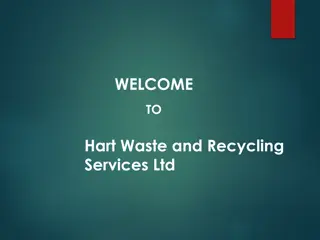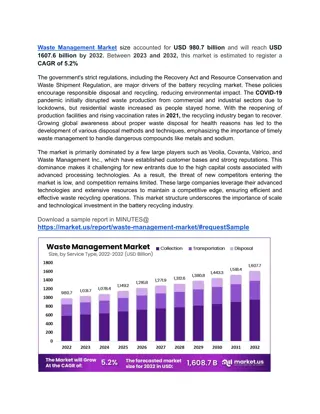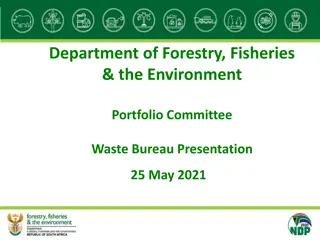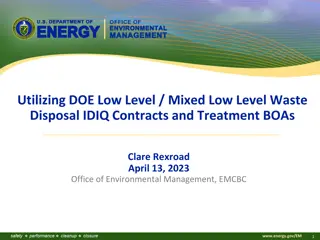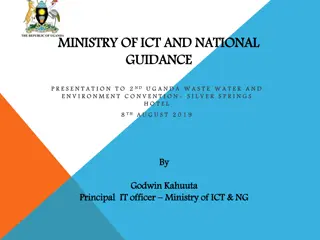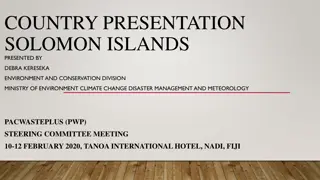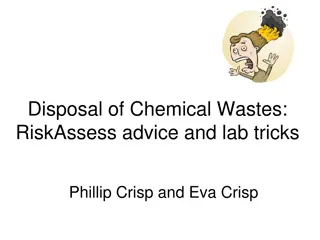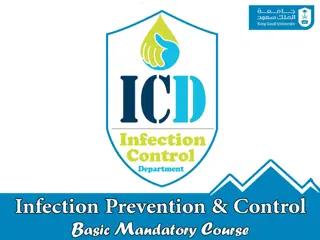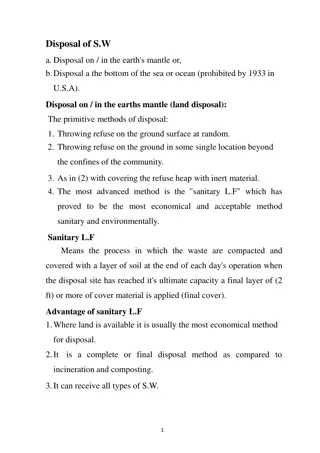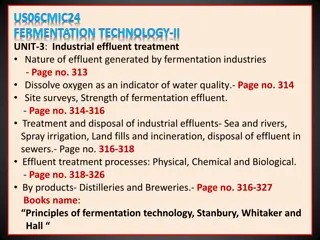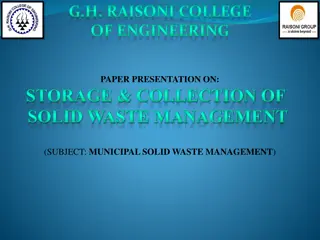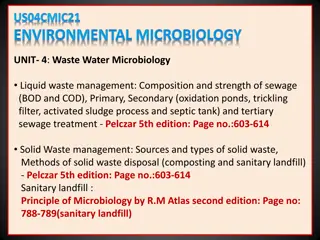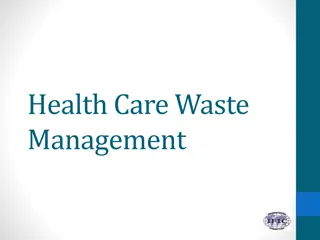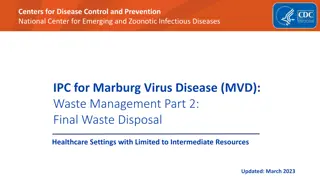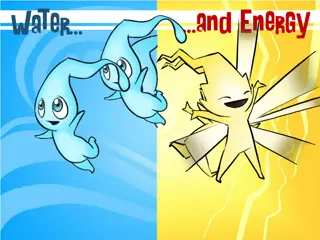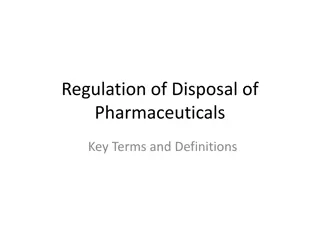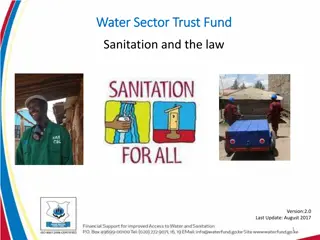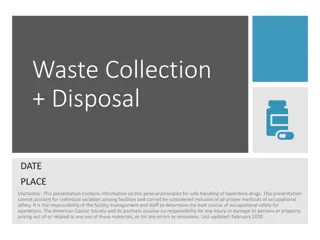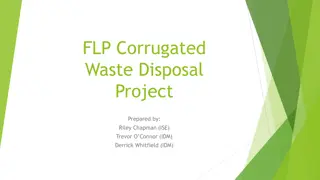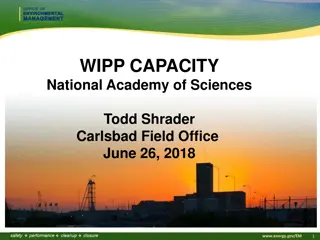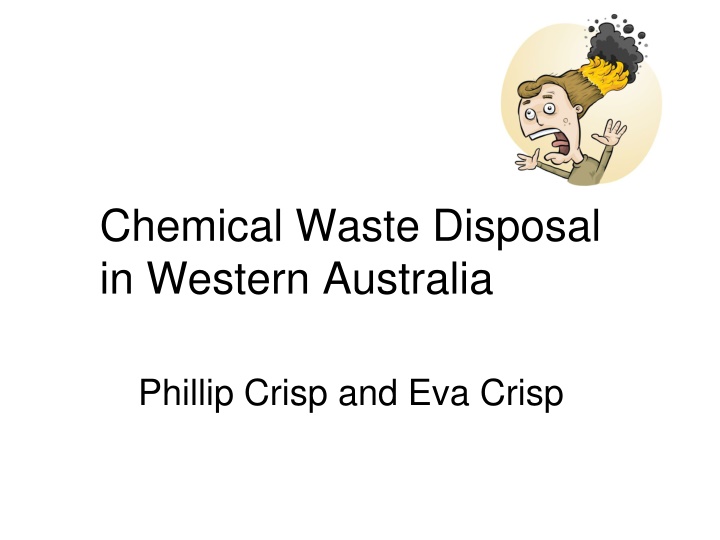
Chemical Waste Disposal in Western Australia Schools
Proper chemical waste disposal in schools is crucial to prevent hazards and protect the environment. This guide provides information on best practices, legal requirements, and resources available in Western Australia for managing chemical waste generated in educational institutions.
Uploaded on | 0 Views
Download Presentation

Please find below an Image/Link to download the presentation.
The content on the website is provided AS IS for your information and personal use only. It may not be sold, licensed, or shared on other websites without obtaining consent from the author. If you encounter any issues during the download, it is possible that the publisher has removed the file from their server.
You are allowed to download the files provided on this website for personal or commercial use, subject to the condition that they are used lawfully. All files are the property of their respective owners.
The content on the website is provided AS IS for your information and personal use only. It may not be sold, licensed, or shared on other websites without obtaining consent from the author.
E N D
Presentation Transcript
Chemical Waste Disposal in Western Australia Phillip Crisp and Eva Crisp
Chemical Disposal The quantity of chemical wastes generated in a school is insignificant (compared with agriculture, mining and industry) HOWEVER Wastes can pose hazards, if stored poorly A school is an educational institution Attitudes adopted during youth continue into adulthood Proper training should be given to those who will later be decision makers
The improvement process eliminate unwanted chemicals redesign procedures to minimize waste production, e.g. spot reactions, recycling, destruction, less toxic chemicals dispose of wastes LEGALLY SAFELY by - sewer - garbage - waste collection service
THE LAW Follow all * WA laws * local government/authority regulations instead of the advice in RiskAssess whenever there is conflict between the two
Water Corporation Laboratory chemical waste https://www.watercorporation.com.au/Help-and-advice/Trade-waste/Trade-waste-in- your-business/Other-industries/Laboratory-chemical-waste chemicals of major concern waste avoidance and minimisation best management practices & specific requirements Laboratory waste from schools http://www.labnetwest.asn.au/wp-content/uploads/2020/06/Laboratory-waste-from- schools.pdf Acceptance criteria for trade waste https://www.watercorporation.com.au/Help-and-advice/Trade-waste/Permits/Trade- waste-permits/Acceptance-criteria-for-trade-waste substances subject to acceptance criteria acceptance criteria for common waste components acceptance criteria for heavy metals (metropolitan)
Waste Authority WasteSorted Schools program https://www.wasteauthority.wa.gov.au/wss/ programs, resources, grants, accredited schools Household Hazardous Waste free dropoff https://www.wasteauthority.wa.gov.au/programs/view/household-hazardous-waste items that can and can t be dropped off school laboratory garbage?
Chemical wastes in schools * Aqueous liquid wastes dissolved salts acidic or basic suspended particles Water-miscible organic wastes alcohols, e.g. methylated spirits ketones, e.g. acetone Water-immiscible organic wastes hydrocarbons, e.g. hexane, kerosene special chemicals, mostly for organic chemistry Solid wastes precipitates, e.g. BaSO4, Fe oxides
Problems in the sewer! toxic metals e.g. Hg, Cd, Pb, As, . . . VERY BAD Cu, Ni, Co, . . . BAD since contaminate sludge $$$ toxic persistent organic chemicals e.g. pesticides since contaminate sludge $$$ highly acidic/alkaline liquids since may damage pipes flammable liquids (water-immiscible) since may cause an explosion!
Aqueous liquid wastes Pour down the sewer ONLY if the acceptance criteria of the Water Corporation are met (known for metropolitan schools). Otherwise, an environmentally responsible approach: neutralize to ~pH 6.5-8.5 (natural waters) only safe amount of each chemical down the drain in order to minimise environmental harm from treated sewage when it is released into river or ocean. All wastes exceeding a safe amount of a chemical should be retained for a waste collection service. WHAT IS SAFE?
Estimation of safe quantities* Consider the cation and anion in a salt separately. Toxicity of a salt is dominated by the most toxic ion: e.g. lead chloride, potassium dichromate Some ions should not go down the drain at all e.g. Hg2+, Pb2+, Cd2+, . . . while others are ok almost without (school) limit e.g. Na+, Ca2+, Cl-, SO42-, . . . and other ions in between * RiskAssess Disposal of chemical wastes , in Learning Resources
Tabulation and calculation Safe disposal quantity for an ion for a class: 0 1000 g/day Copper sulfate copper: 1 g/day [Very toxic to aquatic life with long lasting effects] sulfate: 1000 g/day. [In solid laundry detergent] Therefore, copper sulfate: 1 g/day (as solid or solution) Enough for some spot tests down the drain. Beyond that, wastes need to be collected!
Comparison (g/day) to sewer ElementWater Corporation* RiskAssess Arsenic 1 Cadmium 1 Chromium 30 (10)** Copper 30 (10)** Lead 30 (10)** Mercury 0.1 (1)** Molybdenum 1 Nickel 6 (10)** Selenium 1 Silver 2 Zinc 50 (10)** 0 0 10 1 0 0 1 1 1 1 10 * Acceptance criteria for large metropolitan WWTPs only (Beenyup, Subiaco and Woodman Point); otherwise, case by case ** Water Corporation Laboratory chemical waste , criteria for treatment before discharge
Organic liquid wastes Water-miscible e.g. methylated spirits, acetone Dilute 1 part to 20 parts water, then down the drain. Prevents explosive air/vapour mixture. Microorganisms in sewer will consume the chemicals. Water-immiscible e.g. hexane, kerosene Retain for collection by waste service. Separate hydrocarbon waste from halogenated waste.
Waste processing Collection Large bottles (e.g. 2.5 L Winchesters ) correctly labelled, funnel at top (fume cupboard) Treatment Only if time, equipment and skilled people available Disposal To maximum recommended daily quantity: down the drain or into garbage Otherwise, retain for waste collection SEPARATE CONTAINER FOR EACH WASTE!
Solid wastes Only material of a domestic nature is allowed to be disposed of in the garbage Consider transport of garbage leaching from landfill Geologically-stable minerals (precipitated during reactions) e.g. barium sulfate (baryte) No leaching of toxic chemicals in a domestic landfill.
Purpose of disposal advice improves understanding of harmful properties focuses on avoiding serious environmental harm reduces the cost of waste collection service provides a learning tool for staff and students promotes care for the environment
RiskAssess Advice Individual chemical advice in Disposal SUBSCRIBER for each of >3000 chemicals and solutions Disposal of chemical wastes FREE https://www.riskassess.com.au/docs/DisposalOfChemicalW astes.pdf Chemical waste containers FREE https://www.riskassess.com.au/info/waste_containers Labels for chemical waste containers FREE https://www.riskassess.com.au/info/waste_container_labels How to dispose of chemical wastes SUBSCRIBER In: Safety in Schools book, chapter C7
Labelling and storage of wastes All wastes must be labelled according to GHS, and stored according to Dangerous Goods Class. Flammable wastes in a flammable liquids cabinet! Place each toxic waste in a SEPARATE container! Recommend both: large RA label with GHS information large blank label for hand-writing the quantity and identity of each waste added to the container
RiskAssess pre-prepared waste labels Labels for 25 common wastes ready to print Based on the likely compositions and likely maximum concentrations Otherwise, use Custom Labels, especially if wastes are less hazardous
DEMONSTRATION Learning resources Examples Waste treatment and recycling Labels QUESTIONS team@riskassess.com.au

